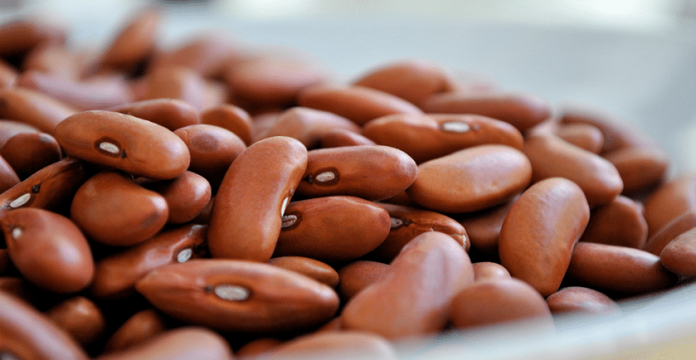
Some of the healthiest foods, even so-called superfoods, contain something called anti-nutrients. These anti-nutrients serve a good purpose for the plants themselves, particularly as a natural defense against pests and other predators. However, these same anti-nutrients may not always be so great for human health.
Anti-nutrients are compounds that reduce the body’s ability to absorb or utilize important nutrients, such as vitamins, minerals, and protein. Before you begin to panic, let me say that these anti-nutrients are only a problem for a select number of people, and that you can take easy steps to neutralize their health impact. So let’s look at some common anti-nutrients and get friendly with them!
Phytates
This anti-nutrient happens to be in one of my favorite foods, broccoli, as well as spinach, but primarily it is found in whole grains, beans, legumes, nuts, and seeds. Phytates are also known as phytic acid, and their “crime” is that they can attach themselves to essential minerals (e.g., iron, manganese, zinc, and to a lesser degree, calcium) and hinder their absorption. Restricted absorption of minerals could expose you to an increased risk of developing anemia, osteoporosis, and several other conditions.
However, the majority of people don’t have to worry about phytates unless they eat a great deal of wheat bran (which is high in phytates) and an otherwise unbalanced diet. The “sting” of phytates can be significantly reduced by cooking. Phytates also have positive traits, such as anti-inflammatory and cholesterol-lowering properties and an ability to stop the spread of cancer cells. So don’t let your kids convince you they can’t eat broccoli because of phytates!
Read about 6 more ways to get broccoli in your diet
Protease inhibitors
Protease inhibitors interfere with our ability to digest protein. Soybeans contain a rich source of protease inhibitors, and once again, beans and other legumes, broccoli, whole grains, and nuts harbor these anti-nutrients, as well as potatoes and rice. Cooking deactivates most protease inhibitors, although soy is more resistant than other foods. However, fermentation (resulting in tempeh, natto, miso) is effective is deactivating the preventive action.
Lectins
These anti-nutrients suppress the absorption of nutrients in the small intestine. More specifically, lectins are sticky proteins that can attach to carbohydrates in the cell membranes of intestinal cells. This action can result in the death of intestinal cells and increased permeability of the gut, which in turn can lead to inflammatory conditions such as inflammatory bowel disease.
You may be surprised to learn that lectins, which are highly durable, are often spliced into GMO foods because they boost resistance to pests and fungi. One more reason to avoid GMO foods! Lectins are also found in grains that contain gluten (e.g., wheat, rye), dairy (made from grain-fed dairy animals), soybeans, peanuts, and nightshades (e.g., eggplant, potatoes, tomatoes, peppers).
Read about how to avoid GMOs in 9 simple steps
Not everyone is equally affected by lectins, as it depends on the state of your digestive tract, how much of them you consume, and how you prepare them. Sprouting, soaking, and fermenting grains and other foods containing lectins can significantly reduce any negative effects. Taking probiotics also can help maintain a healthy gut and put the brakes on lectin activity.
Glucosinolates
Here’s another anti-nutrient found in my favorite vegetable; in fact, glucosinolates are plentiful in all the cruciferous veggies. Once you consume Brussels sprouts, cauliflower, kale, radishes, and their cousins, the body processes the glucosinolates, which can suppress the thyroid gland’s job of using iodine to make thyroid hormones. These hormones are critical for healthy metabolism.
Cooking, however, destroys nearly all of these compounds. If you have a thyroid disorder and if you are also iodine deficient, eating lots of cruciferous vegetables theoretically might be an issue. But that’s a big “if.”
On the plus side, glucosinolates have been shown to possess cancer-fighting properties. In fact, the authors of a recent study from the University of Alabama, Birmingham, stated that cruciferous vegetables are “perhaps a key to eliminating cancer as a life threatening disease.” It seems like a little steam or sautéing will remove any threat from the glucosinolates in your cauliflower and kale and help fight cancer to boot!
Oxalates
Oxalates are anti-nutrients because they can increase the risk of developing kidney stones and also inhibit the absorption of calcium. Foods rich in oxalates include spinach and beet greens, with lesser amounts in okra, wheat bran, wheat germ, green beans, almonds, soybeans, berries, grapes, plums, and chocolate.
Although we can get oxalates from foods, the human body also produces them naturally. In fact, the body converts vitamin C into oxalates. Therefore, although oxalates are considered to be anti-nutrients, they aren’t that scary at all except among people who have rare conditions such as absorptive hypercalciuria type II, enteric hyperoxaluria, or primary hyperoxaluria, and then oxalates should be restricted. If you are prone to kidney stones, you also may want to limit your intake of foods rich in these so-called anti-nutrients. Cooking has little impact on reducing oxalate activity.
Should you be afraid of anti-nutrients? The evidence suggests you can largely let your guard down and still chow down on many nutritious and delicious foods while being aware of which ones may pose a manageable problem.
Image via Cookbookman17










